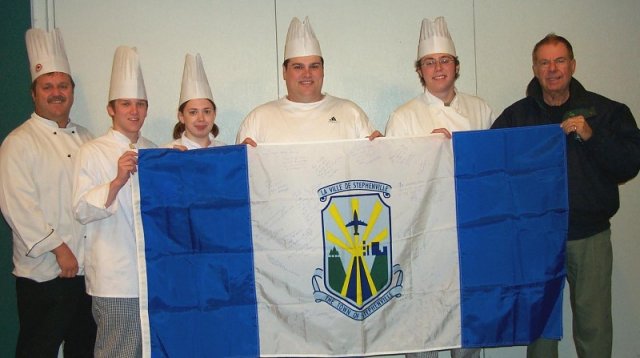
Students of the Commercial Cooking program at CNA recently attended a cooking competition in Mexico: From left, Eric King, Chef/Instructor; Chad Burden, first year student; Lana Madore, first year; Eric Hynes, team captain; Brad Carpenter, first year; and Stephenville Mayor Cecil Stein welcoming Team Canada home.